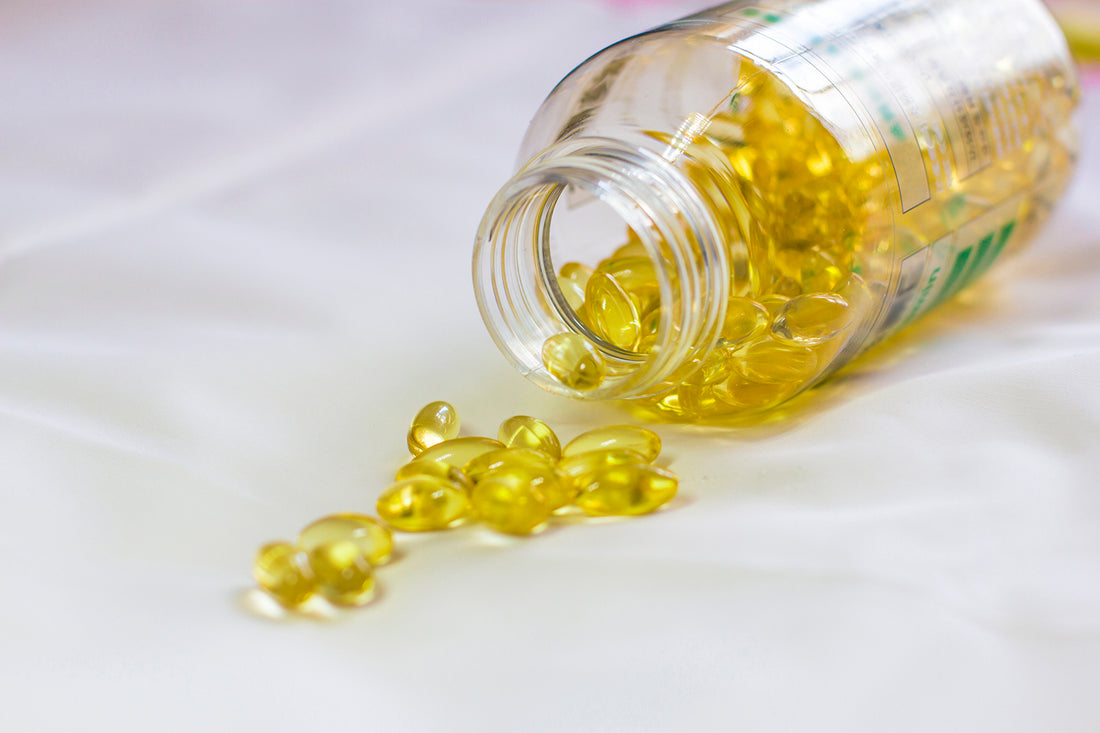The right kind of vitamin E for skin….?
Yes, there indeed are different types of Vitamin E out there – synthetic and natural or even nature-derived! But more importantly in this case the form of Vitamin E used in a formulation is what matters for your skin
So, let’s try and understand Vitamin E a little more…
Vitamin E is a fat-soluble antioxidant, that has been in use for more than 50 years in dermatology. Used in many cosmetic products because it helps protect the skin from harmful effects of solar radiation by acting as a free-radical scavenger. There are studies that suggest that it has anti-cancerous and photoprotective properties [1].
But this is where i must emphasize that - Not all vitamin E’s available in skin care products are created equal!
Yes, that right! And this is why it’s good to understand Vitamin E more before you buy a skin care product that contains Vitamin E.
Vitamin E is available commercially as a variety of synthetic derivatives, most commonly D-Tocopheryl acetate or dl-tocopherol acetate or Vitamin E Acetate, but the limited cellular metabolism in skin layers makes the use of such products ineffective [4].
Its only when natural vitamin E is used on skin, the skin recognizes it and actually metabolizes it. Vitamin E naturally occurs as mixed tocopherols and not as a conjugated form called vitamin E acetate or tocopherol acetate. Vitamin E acetates are better absorbed when taken as an oral supplement not when they are applied on skin. Most vitamin E capsules available in the pharmacies as a health supplement are tocopheryl or tocopherol acetate.
It is the use of mixed tocopherols, similar to that found in natural sources, has provided the most consistent data concerning it’s efficacy in skin care products. The vitamin E family consists of 4 different tocopherols and tocotrienols (Alpha, beta, gamma and delta ) [2] . Together they complement and enhance each other’s effectiveness. Several studies indicate that mixed tocopherols are more effective than just alpha tocopherol alone in quenching free radical and preventing disease. Many vitamin E supplements are made up of only alpha tocopherol.
Here is what Linus Pauling Institute of Oregon State University, USA have mentioned on their Vitamin E section - “Vitamin E is available commercially as a variety of synthetic derivatives, but the limited cellular metabolism in skin layers makes the use of such products problematic. Use of unesterified vitamin E, similar to that found in natural sources, has provided the most consistent data concerning its topical efficacy”.
So, basically when buying a Vitamin E enriched skin care product look for Mixed Tocopherols or Tocopherols in the ingredient list as this is the natural form in which vitamin E exists in nature. The Tocopherols can be in addition to Tocopheryl acetate or vitamin E acetates. However, if a product has just acetate form of vitamin E then it may not be the best form of vitamin E you are feeding your skin!
At Prakrta we use only natural vitamin E in the form of mixed tocopherols in our products.
Why use vitamin E products at all?
Well…. there are some key benefits of using the natural form of Vitamin E (Mixed Tocopherols) on skin.
Vitamin E is truly an integral part of the skin’s antioxidant defenses, primarily providing protection against UV radiation and other free radicals. This is why Vitamin E is a great addition to any skin care products.
There are some studies that show that Vitamin E improves the skin water binding capacity or in layman terms skin hydration [6].
Vitamin E also shows anti-inflammatory activity in skin and may help soothe inflamed irritated skin conditions.
It may also help improve appearance of scars or marks and that is why it is used extensively in products to reduce stretch mark.
Prakrta products that contain Natural Vitamin E (mixed tocopherols) are...
Serum Of Youth – 100% natural face oil
https://prakrta.in/products/serum-of-youth-face-serum
Vita‘MUM’ E – Skin toning oil with vitamin E, for moms and to-be-moms
https://prakrta.in/collections/baby-care/products/vitamum-e-vitamin-e-oil-with-natural-coffee-extract-for-mommies-mommies-to-be
Vita’MUM’ E – Belly Butter during and post pregnancy
https://prakrta.in/collections/baby-care/products/vitamum-e-belly-rub-butter-for-mommies-and-to-be-mommies
Tender Skin Baby Oil – Virgin coconut oil with vitamin E and Avocado extract 100ml
https://prakrta.in/collections/baby-care/products/tender-skin-baby-oil
Tender Skin Baby Oil – Virgin coconut oil with vitamin E and Avocado extract 200ml
https://prakrta.in/products/tender-skin-baby-oil-virgin-coconut-oil-with-vit-e-and-avocado-extract-100-natural
References of scientific studies or health articles/websites
1. https://www.ncbi.nlm.nih.gov/pmc/articles/PMC4976416/#!po=62.5000
Keen MA, Hassan I. Vitamin E in dermatology. Indian Dermatol Online J. 2016 Jul-Aug;7(4):311-5. doi: 10.4103/2229-5178.185494. PMID: 27559512; PMCID: PMC4976416.
2. https://lpi.oregonstate.edu/mic/health-disease/skin-health/vitamin-E
accessed 23rd May 2020
3. https://pubmed.ncbi.nlm.nih.gov/17719081/
Thiele JJ, Ekanayake-Mudiyanselage S. Vitamin E in human skin: organ-specific physiology and considerations for its use in dermatology. Mol Aspects Med. 2007;28(5-6):646‐667. doi:10.1016/j.mam.2007.06.001
4. https://pubmed.ncbi.nlm.nih.gov/8875556/
Alberts DS, Goldman R, Xu MJ, et al. Disposition and metabolism of topically administered alpha-tocopherol acetate: a common ingredient of commercially available sunscreens and cosmetics. Nutr Cancer. 1996;26(2):193‐201. doi:10.1080/01635589609514475
5. https://pubmed.ncbi.nlm.nih.gov/8875555/
Gensler HL, Aickin M, Peng YM, Xu M. Importance of the form of topical vitamin E for prevention of photocarcinogenesis. Nutr Cancer. 1996;26(2):183‐191. doi:10.1080/01635589609514474
6. https://pubmed.ncbi.nlm.nih.gov/17256076/?dopt=Citation
Gönüllü U, Sensoy D, Uner M, Yener G, Altinkurt T. Comparing the moisturizing effects of ascorbic acid and calcium ascorbate against that of tocopherol in emulsions. J Cosmet Sci. 2006;57(6):465‐473.

